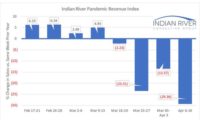AIA Index Indicates Nonresidential Construction Outlook At A Record Low
The
American Institute of Architects reported that the Architecture Billings Index (ABI) dropped two points in March and fell to its
lowest level since 1995. As a leading economic
indicator of construction activity, the ABI shows an approximate nine to 12
month lag time between architecture billings and construction spending.
The ABI rating dropped to 39.7, following a 9-point decline in February (any score above 50 indicates an increase in billings). The inquiries for new projects score was 48.0, also the lowest mark for the survey.
“We’ve seen an 11-point fall-off in the first quarter of the year and the prognosis for commercial construction later this year is not favorable at this point,” said AIA Chief Economist Kermit Baker, PhD, Hon. AIA. “Aside from historically low project demand, all regions are showing very poor business conditions. This is not likely to reverse itself anytime soon.”
The ABI rating dropped to 39.7, following a 9-point decline in February (any score above 50 indicates an increase in billings). The inquiries for new projects score was 48.0, also the lowest mark for the survey.
“We’ve seen an 11-point fall-off in the first quarter of the year and the prognosis for commercial construction later this year is not favorable at this point,” said AIA Chief Economist Kermit Baker, PhD, Hon. AIA. “Aside from historically low project demand, all regions are showing very poor business conditions. This is not likely to reverse itself anytime soon.”
- Regional averages: South (45.3), Northeast (38.7), West (38.7), Midwest (36.9).
- Sector index breakdown: institutional (50.8), commercial / industrial (38.3) multifamily residential (31.7).
Looking for a reprint of this article?
From high-res PDFs to custom plaques, order your copy today!





